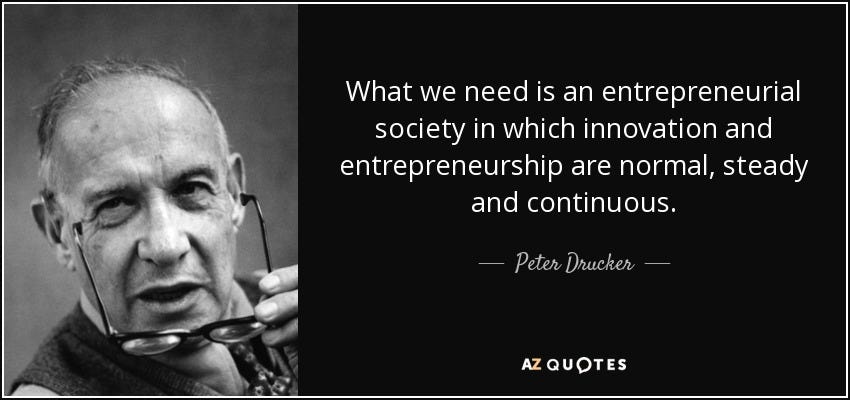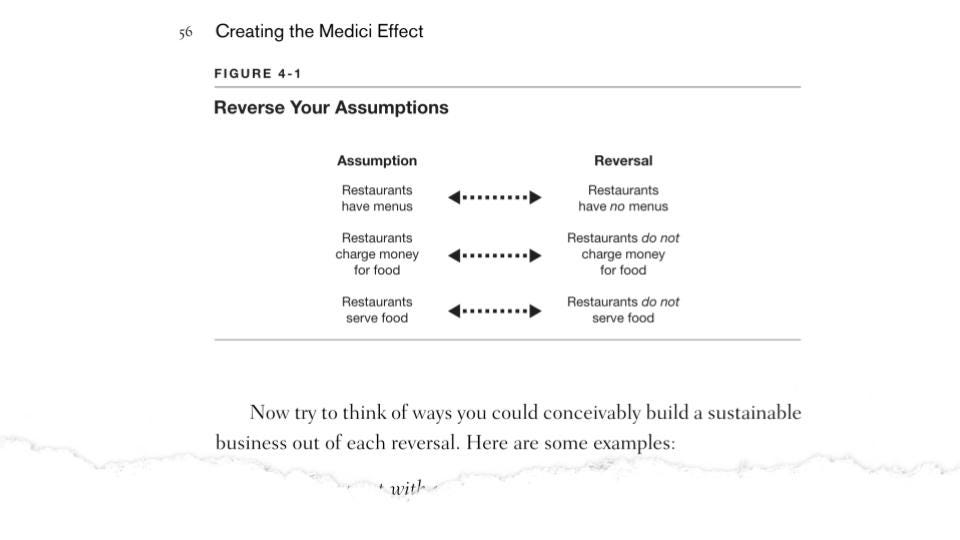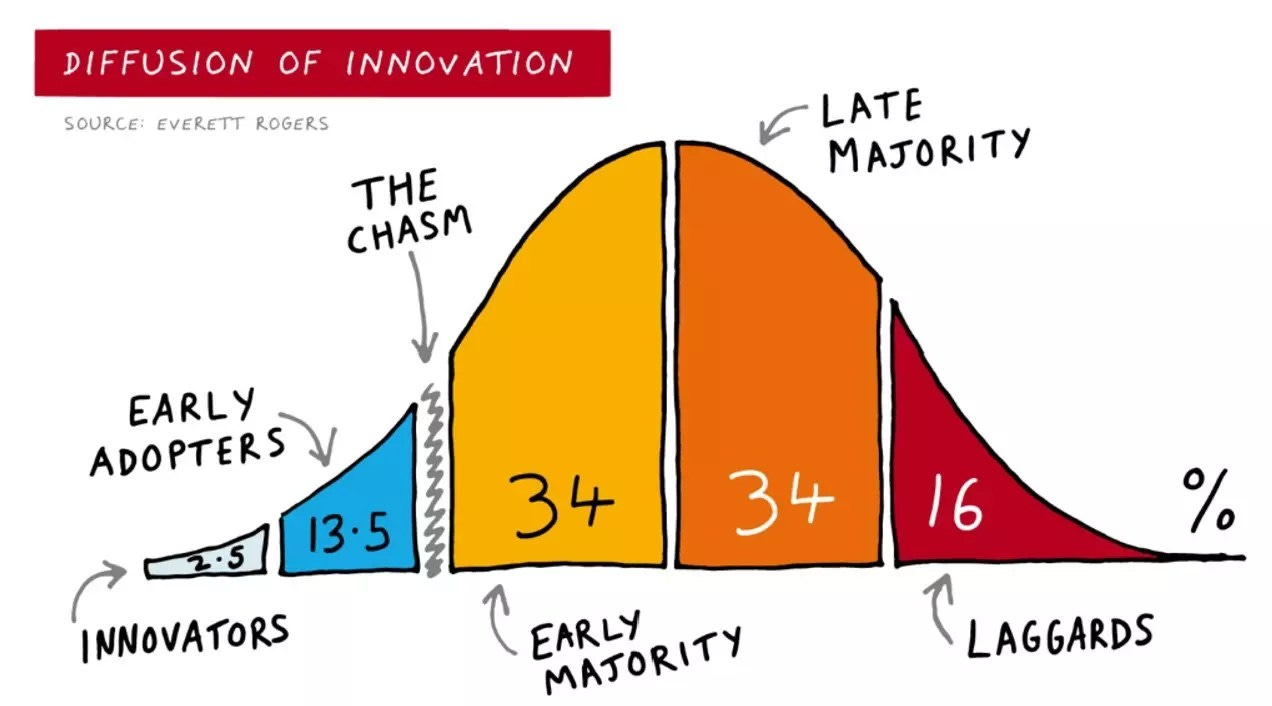This Summer, Go First Principle - 16 Innovation Books for Your Reading List (Part 1/2)
Part 1 of 2: a curated selection of foundational reads to sharpen your innovation toolkit this summer.
Previously on Open Road Ventures: in the last episode of Venturing Insights, I shared my experience at the Global Corporate Venturing Symposium 2025. If you missed it, you can catch up here!
As summer kicks in, it’s the perfect time to step back from the daily rush and return to first principles of innovation.
The greatest innovation leaders and strategists often rely on timeless frameworks and mental models to guide their decisions.
Below is a hand-picked summer reading list of classic books that embody those foundational ideas. Consider these titles your beachside masterclass in innovation strategy: each one offers clear insights into what you’ll learn and why it matters for open innovation leaders, corporate venture investors, and startup founders alike.
You’ll find the first 8 books of the series — each with a short, practical blurb about what you’ll learn, why it matters, and how it fits into your innovation journey.
Before you dive in
Below you’ll find links to each book. These are affiliate links: if you decide to purchase a title through one of them, it won’t cost you anything extra, but it will indirectly support this project and help me continue sharing insights on innovation and venturing. Thank you for the support, and happy reading!
1. Innovation and Entrepreneurship – Peter F. Drucker
👉🏻 Amazon Link
Peter Drucker’s classic Innovation and Entrepreneurship was one of the first books to argue that innovation isn’t just luck or inspiration: it’s a purposeful, systematic discipline.
🧠 What you’ll learn: Drucker lays out how to spot opportunities for innovation (he famously identifies seven sources of innovative opportunity) and how to build entrepreneurial ventures with disciplined management. He shows that anyone in business can learn to practice innovation step-by-step, rather than waiting for “eureka” moments.
💡Why it matters: For today’s innovation and strategy professionals, this book is a powerful reminder that mastering the fundamentals (from understanding your industry changes to testing new ideas) is what drives consistent innovation success. Drucker’s insights form the bedrock of modern innovation management, so revisiting his blueprint will sharpen your ability to lead innovation with focus and intention.
2. Competing Against Luck – Clayton M. Christensen, Taddy Hall, Karen Dillon
👉🏻 Amazon Link
Innovation need not be left to chance. In Competing Against Luck, Clayton Christensen (of Innovator’s Dilemma fame) and his co-authors introduce the Jobs to Be Done theory – a groundbreaking framework that helps you understand why customers really make the choices they do.
🧠 What you’ll learn: Instead of segmenting markets by demographics or product categories, you’ll learn to view your product through the lens of the “job” a customer hires it to do. This book teaches you how to uncover those deep customer motivations and use them to innovate products that reliably hit the mark. It essentially makes innovation more predictable (and less “lucky”) by focusing on fulfilling real customer jobs better than any alternative.
💡Why it matters: For innovation leaders, applying Jobs-to-Be-Done means you can develop offerings that customers pull into their lives, rather than pushing features they may not care about. It’s a game-changer for strategy – helping ensure that your next product or venture is solving the right problem, thus significantly upping the odds of success in the market.
3.Value Proposition Design – Alexander Osterwalder, Yves Pigneur, Greg Bernarda, Alan Smith
👉🏻 Amazon Link
Even the best ideas can flop without a clear value proposition. Value Proposition Design is a hands-on guide that helps you craft products and services customers truly want.
🧠 What you’ll learn: Using the simple but powerful Value Proposition Canvas, this book shows how to systematically map out your customer’s pains, gains, and jobs-to-be-done, and then design your product’s features to perfectly match those needs. It’s an interactive toolkit (full of templates and examples) for finding the elusive product-market fit by aligning what you offer with what customers are waiting for.
💡Why it matters: In innovation, clarity is king. Osterwalder’s approach forces you to get specific about why your solution matters to the customer. Innovation and strategy professionals will find that this methodology brings discipline to the creativity of product development: ensuring your team’s big ideas are rooted in delivering real value. It’s a surefire way to avoid the “solution in search of a problem” trap and instead build offerings that pull customers in from day one.
4. The Alchemy of Growth – Mehrdad Baghai, Stephen Coley & David White
👉🏻 Amazon Link
How do companies achieve not just one innovation win, but continuous growth over time? The Alchemy of Growth tackles this challenge head-on with a practical framework for balancing present and future opportunities.
🧠 What you’ll learn: The authors introduce the famous Three Horizons model, which teaches you to manage innovation across three time horizons simultaneously: (1) strengthen and extend your core business today, (2) nurture emerging new businesses for tomorrow, and (3) plant the seeds of more radical options that could become the next big thing in the future. By diving into case studies and tools, you’ll learn how to allocate resources and leadership attention across these horizons.
💡Why it matters: Innovation leaders often struggle with the “now vs. next” dilemma. This book provides a structured approach to ensure you’re delivering results for the present while not neglecting longer-term bets. For corporate venturing executives and strategists, the Three Horizons model is invaluable: it helps you create a balanced innovation portfolio so your company can grow consistently without stalling out, effectively performing the “alchemy” of turning today’s work into tomorrow’s gold.
5. The Medici Effect – Frans Johansson
👉🏻 Amazon Link
Sometimes, the breakthrough idea you need won’t come from where you expect – it will come from the intersection of fields, cultures, and industries. The Medici Effect is an inspiring read on how diversity drives innovation.
🧠 What you’ll learn: Johansson illustrates through vivid examples that the most powerful innovations often happen when you combine concepts from different domains . Whether it’s a chef borrowing from engineering or a tech startup learning from nature, the book shows how stepping into unfamiliar territory sparks creative insight (a nod to how the Medici family ignited the Renaissance by bringing together artists, scientists, architects, etc.). You’ll also learn practical tips for generating intersectional ideas and for building diverse teams that can execute them.
💡Why it matters: In a world of specialization, this book makes the case that connecting silos is the key to innovation. For open innovation and corporate venture leaders, The Medici Effect reinforces why we must seek input beyond our industry echo chambers: be it through partnerships, hiring diverse talent, or cross-pollinating ideas. Embracing diversity in thought and experience isn’t just a nice HR slogan; it’s a strategic advantage that can lead to category-defining innovations and strategies no competitor sees coming.
6. What Customers Want – Anthony Ulwick
👉🏻 Amazon Link
Instead of guessing what customers want, what if you had a method to know exactly which outcomes they’re looking for? In What Customers Want, Tony Ulwick presents his Outcome-Driven Innovation (ODI) process – a rigorous approach that takes the mystery out of identifying customer needs.
🧠 What you’ll learn: Ulwick shows that customers “hire” products to get jobs done (he was involved in Christensen’s work) and that they measure success with specific outcomes. You’ll learn how to gather those customer outcomes in a structured way and prioritize opportunities where customers are most underserved. It’s a disciplined, almost scientific approach to innovation: define the “job”, list the desired outcomes (like speed, reliability, cost etc.), and then systematically target the outcomes with the biggest gaps . By the end, you can literally quantify what customers value most and design solutions to deliver exactly that.
💡Why it matters: For innovation professionals, ODI brings predictability and focus to innovation. Instead of the usual guesswork or endless feature wish-lists, you’ll be armed with clear data on what matters to your customers. This means higher new product success rates and less wasted effort. In essence, Ulwick’s book is about making innovation customer-centric to the core: a competitive edge whether you’re crafting a startup MVP or steering a Fortune 500 product strategy.
7. Diffusion of Innovations – Everett M. Rogers
👉🏻 Amazon Link
Ever wonder why some innovations catch on and others fizzle? Diffusion of Innovations is the seminal work that explains how new ideas spread (or don’t) through societies and organizations.
🧠 What you’ll learn: Rogers breaks down the adoption lifecycle into five adopter groups (innovators, early adopters, early majority, late majority, and laggards) and describes the characteristics of each. You’ll discover the factors that influence adoption speed, such as relative advantage (is your innovation clearly better than the status quo?), compatibility (does it fit into people’s lives easily?), complexity, trialability, and observability. Rogers also delves into the communication channels and social systems that affect diffusion. This book essentially gives you an X-ray into the social dynamics of change: from how awareness builds to how opinion leaders tip the balance.
💡Why it matters: If you’re leading innovation, you’re also in the business of driving adoption: whether it’s a new product in the market or a new process within your company. Rogers’ insights help you craft strategies to cross the chasm between early enthusiasts and the mainstream (long before “crossing the chasm” became a term) . Understanding diffusion means you can better predict challenges (like resistance or slow uptake) and design tactics (be it targeted marketing or change management) to overcome them. In short, this book provides timeless wisdom on the human side of innovation that’s crucial for any change-maker.
8. Winning at New Products – Robert G. Cooper
👉🏻 Amazon Link
Developing successful new products is hard, but Winning at New Products shows it’s not just a roll of the dice: there are proven practices and processes that tilt the odds in your favor.
🧠 What you’ll learn: Dr. Robert Cooper, drawing on decades of research, reveals the critical success factors behind product innovation winners (and the causes of failures). Most famously, he introduces the Stage-Gate® process: a structured roadmap that breaks the journey from idea to launch into stages, each followed by a management “gate” where the project must meet certain criteria to continue . You’ll learn how to do rigorous up-front homework, build business cases, conduct effective development and testing, and make go/kill decisions using data. Cooper also highlights how to pick the right projects and manage your portfolio.
💡Why it matters: For corporate innovation and R&D teams, this book is like an operations manual for innovation. It helps instill discipline without killing creativity, ensuring that resources are focused on the most promising ideas and that those ideas are executed professionally. By applying Cooper’s principles, organizations can dramatically improve their new product success rate, speed to market, and profitability. In a world where many initiatives fail to launch (or flop upon launch), Winning at New Products provides the strategic rigor to consistently drive innovation results, not just activity.
⏳ To Be Continued…
These first 8 titles are a crash course in innovation fundamentals: covering everything from value creation to customer insight, from go-to-market timing to portfolio thinking. Whether you’re leading a venture, designing a strategy, or scouting the next startup to back, these books offer frameworks you’ll return to again and again.
But we’re just getting started. Next week, in Part 2 of this series, I’ll share 8 more titles (maybe with some 🎁 bonus ones) focused on execution, venturing, design thinking, and building new businesses inside and outside the corporate walls.
📣 Want to be featured on Open Road Ventures?
If you’re building a tool, service, or promoting an event in the innovation landscape, check out this page to learn how to sponsor a spot in front of 1,200+ engaged innovators. Let’s brew something great together!












